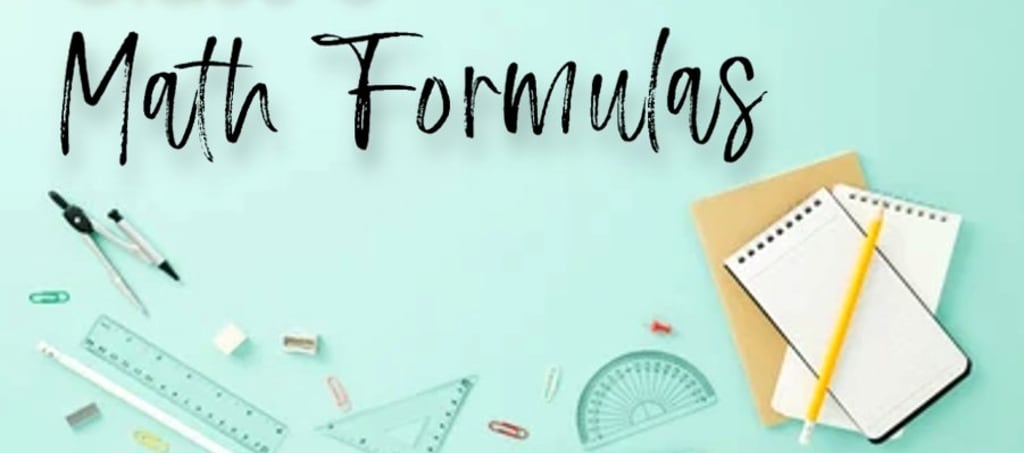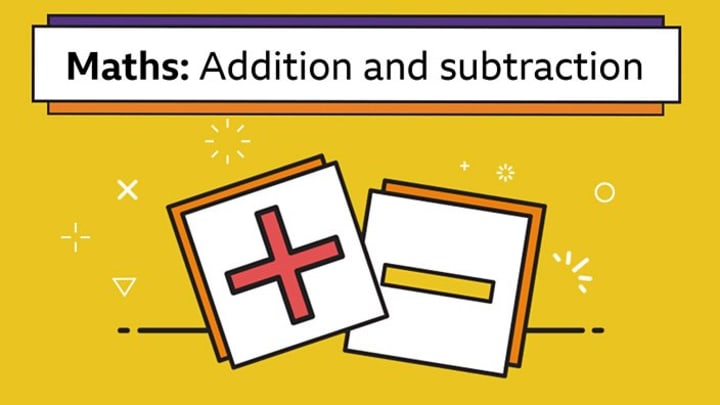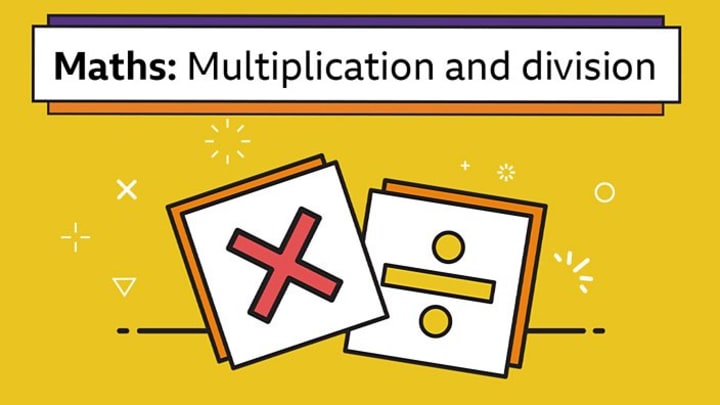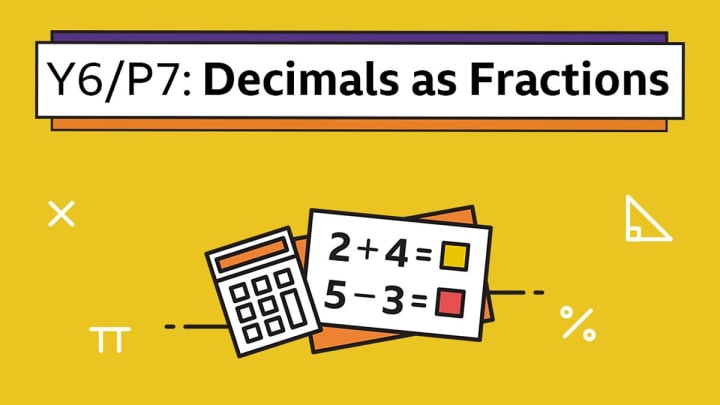Easy Math Formulas: Your Essential Guide for Success
Math Formulas Essential Guide

Introduction
Mathematics is a subject that many students find challenging, but with the right tools and knowledge, it can become much easier to grasp. In this comprehensive guide, we will explore a variety of easy math formulas that will serve as your essential guide for success. Whether you are a student struggling with math concepts or an adult looking to brush up on your skills, these formulas will help you navigate through the world of numbers with confidence and ease.
Why Are Easy Math Formulas Important?
Understanding and memorizing math formulas is crucial for several reasons. Firstly, these formulas provide a shortcut to solving complex mathematical problems. By having a collection of easy math formulas at your disposal, you can quickly calculate solutions without having to derive them from scratch every time. Secondly, math formulas help build a strong foundation for higher-level mathematics. Many advanced concepts are built upon basic formulas, so mastering them early on will make future learning much more manageable. Lastly, easy math formulas promote problem-solving skills and logical thinking, which are valuable attributes in various academic and professional fields.
The Power of Addition and Subtraction

Addition: The Building Block of Math
Addition is one of the fundamental operations in mathematics, and it serves as the building block for more complex calculations. The formula for addition is simple:
a + b = c
In this formula, "a" and "b" are the numbers being added, and "c" represents their sum. For example, if we have 2 + 3, the result would be 5. By practicing addition regularly and committing basic addition facts to memory, you will be able to perform mental calculations quickly and accurately.
Subtraction: The Art of Taking Away
Subtraction is the inverse operation of addition. It involves taking away one number from another to find the difference. The formula for subtraction is:
a - b = c
In this formula, "a" is the minuend (the number you start with), "b" is the subtrahend (the number you subtract), and "c" is the difference. For example, if we have 7 - 3, the result would be 4. By mastering subtraction, you will develop the ability to analyze situations where quantities decrease or change.
Multiplication and Division Made Easy

Multiplication: Repeated Addition
Multiplication is a mathematical operation that involves adding a number to itself multiple times. This operation is commonly represented by the "×" symbol or by placing numbers next to each other. The formula for multiplication is:
a × b = c
In this formula, "a" and "b" are the factors being multiplied, and "c" represents their product. For example, if we have 4 × 3, the result would be 12. By mastering multiplication, you will be able to solve problems that involve equal groups or repeated addition more efficiently.
Division: Sharing and Grouping
Division is the inverse operation of multiplication. It involves splitting a quantity into equal parts or groups. The formula for division is:
a ÷ b = c
In this formula, "a" is the dividend (the number being divided), "b" is the divisor (the number you divide by), and "c" is the quotient. For example, if we have 15 ÷ 3, the result would be 5. Division helps us understand the concept of sharing and helps us solve problems that involve fair distribution.
Fractions and Decimals: The Language of Proportions

Understanding Fractions
Fractions are a way of representing numbers that are not whole or integer values. They consist of a numerator and a denominator separated by a horizontal line. Fractions are useful for representing parts of a whole or comparing proportions. For example, the fraction ⅓ represents one out of three equal parts. To add or subtract fractions, use the following formula:
a/b ± c/d = (ad ± bc) / bd
In this formula, "a/b" and "c/d" are the fractions being added or subtracted, and the resulting fraction is simplified by finding the greatest common divisor (GCD) of the numerator and denominator.
Working with Decimals
Decimals are another way of representing non-integer numbers. They are useful for expressing precise values and performing calculations with more accuracy. Decimals can be added, subtracted, multiplied, and divided using the same principles as whole numbers. For example, to multiply decimals, you can use the following formula:
a × b = c
In this formula, "a" and "b" are the decimal numbers being multiplied, and "c" is the product. Remember to align the decimal points before performing the multiplication.
Geometry: Shape Up Your Math Skills
Understanding Geometric Shapes
Geometry deals with the properties, measurement, and relationships of points, lines, angles, surfaces, and solids. It provides a framework for understanding the physical world around us. Here are some essential formulas for common geometric shapes:
Area of a Rectangle
The area of a rectangle can be calculated using the following formula:
Area = Length × Width
Circumference of a Circle
The circumference of a circle can be calculated using the following formula:
Circumference = 2 × π × Radius
Volume of a Cylinder
The volume of a cylinder can be calculated using the following formula:
Volume = π × Radius² × Height
Pythagorean Theorem
The Pythagorean Theorem relates the lengths of the sides of a right triangle. It can be stated as follows:
a² + b² = c²
In this formula, "a" and "b" represent the lengths of the triangle's legs, and "c" represents the length of the hypotenuse.
FAQs on Math Formulas
Q1. What are some fundamental math formulas?
Some basic math formulas include:
Area of a rectangle: A = length × width
Perimeter of a rectangle: P = 2 × (length + width)
Area of a circle: A = π × radius²
Circumference of a circle: C = 2 × π × radius
Pythagorean theorem: In a right-angled triangle, the square of the hypotenuse (the side opposite the right angle) is equal to the sum of the squares of the other two sides. It can be written as a² + b² = c², where c is the hypotenuse, and a and b are the other two sides.
Q2. What is a formula in math and can you provide an example?
In mathematics, a formula is an equation that expresses a relationship between different mathematical quantities or variables. It provides a way to calculate or derive one quantity based on the values of other known quantities. An example of a formula is the quadratic formula:
x = (-b ± √(b² - 4ac)) / 2a
This formula is used to find the roots (values of x) of a quadratic equation of the form ax² + bx + c = 0, where a, b, and c are constants.
Q3. What is the BODMAS rule?
The BODMAS rule is an acronym that stands for the order of operations in arithmetic. It provides a guideline for performing calculations involving multiple operations. BODMAS stands for:
B - Brackets (parentheses)
O - Orders (exponents and roots)
DM - Division and Multiplication (from left to right)
AS - Addition and Subtraction (from left to right)
Q4. What is O in BODMAS?
In the acronym BODMAS, the letter "O" stands for "Orders," sometimes also referred to as "Exponents" or "Indices." It represents the operations involving powers and roots in mathematical expressions. The "O" in BODMAS reminds us to perform calculations involving exponents or indices before moving on to the next steps of the order of operations.
Q5. How can I apply math formulas in real-life situations?
Math formulas have numerous applications in daily life, such as calculating discounts, budgeting, cooking, measuring, and understanding financial concepts. By understanding and applying math formulas, you can make informed decisions and solve practical problems.
Conclusion
Mathematics can be challenging, but with the right tools and knowledge, it becomes much more accessible. By mastering easy math formulas, you can build a solid foundation for success in math and beyond. Remember to practice regularly, seek additional resources when needed, and apply math concepts to real-life situations. With dedication and perseverance, you can conquer any math problem that comes your way.
About the Creator
Gaurav Mehra
I am a Chemistry Teacher at Infinity Learn and Teach students on YouTube for free. And here to help students through my blogs.
Enjoyed the story? Support the Creator.
Subscribe for free to receive all their stories in your feed. You could also pledge your support or give them a one-off tip, letting them know you appreciate their work.






Comments
There are no comments for this story
Be the first to respond and start the conversation.